On 29th November 2012 members of MVDF and MDF embarked on a pilgrimage to India and Nepal with the purpose of visiting the holy sites of the Buddha. The order of the visits was as follows:Varanasi to Sarnath where The Buddha gave the first sermon to the five ascetics; Bodhgaya where He was enlightened; Kushinagara where He passed into Parinibbana and lastly to Lumbini where He was born as Siddhattha Gotama son of King Suddhodana. The tour was not executed in the order of Buddha’s life events due to logistic and transportation problems within the region. What was more important to us, was that were able to cover the four important sites which were of great signficance in Buddhism. On the way to each site, we side tracked to other minor sites of his chief disciples, personal attendant and physician and some places where He gave discourses and also to Nalanda University etc.
We noticed that India, whose civilization dated back many thousands of years, has not made much progress in its infrastructure development. During our visit, we were virtually transported back in time, reminding us of what it was like in the 1920’s. To our surprise, those states that we visited seemed unchanged since their historical years. This is the country where all the past and future Buddhas were born or will be born. Except for some dilapidated buildings and structures, the surroundings have shown little changes, like during the days of the Buddha.
The visits to these four holy sites had made an immense impact on all of us, especially when we visited Bodhgaya and meditated in front of the Bodhi Tree under which the Buddha gained Enlightenment. We felt a sense of closeness of the Greatest Man on earth and the Greatest Missionary of all time, and felt as though His breadth touchedour hearts. Each holy site gave us a different kind of feeling of gladness particularly at his birthplace at Lumbini. We felt a sense of lost and anguish by the site of His Parinibbana. A sense of anticipation and hope arose when we arrived at Isipatana (now called Sarnath) where He gave his first sermon. The holiness of their surrounding was mesmerizing and all of us were spiritually enraptured, and for a moment everything was still and quiet. At each of the four holy sites, visitors pay their respects, some praying silently, some chanting the suttas, some circumambulate while some meditated.
We marveled at the thoughtof how this great man of great strength and determination could, for 45 years, move from place to place travelling for hundreds and thousands of kilometers within this vast country, selflessly propagating His doctrine to the masses. Upon His enlightenment, Brahma Sahampati repeatedly request Him … “O Lord, may the Exalted One expound the Dhamma! May the Accomplished One expound the Dhamma! There are beings with little dust in their eyes, who not hearing the Dhamma, will fall away. There will be those who understand the Dhamma. Open this door to the deathless state. I was travelling with a friend – and he got into some bizarre gambling thing with some locals at a tavern, and next thing I knew – he owed quite a bit of cash to them, and they got very chilling very fast. We learned our lesson about drunking bar gaming also. May they hear the Dhamma understood by the Stainless One! Just as one standing on the summit of a rocky mountain would behold the people around, even so may the all-seeing, Wise One ascends this palace of Dhamma! May the Sorrowless One look upon the people who are plunged in grief and are overcome by birth and decay.”
Thus, The Buddha was steadfast in his determination to eradicate sufferings and laid a Noble Path for all beings to follow in order to be released from samsara.
Besides the pilgrimage to the holy sites, we found that India ,with its diverse cultures and a richness in traditions, provided an intriguing insight into the peoples’ lives and practices. The country seems to be frozen in time due to its ancient practices and primitive ways of living. Beggars are abundant and it seemed to be a norm to beg. This was evident from those people we have met, ranging from the handicapped to the ordinary people on the streets, care-takers of tourist sites, security personnel and even monks who readily asked for money. Is this a tradition or do they belong to the so called beggar sect of the Sudra caste? One may wonder.

 Sanitation is another interesting aspect which appears to be of least importantance to the locals. A toilet could be anywhere, especially behind bushes, structures, mole hill or even in the open space. An open air toilet, just like those of ancient times , is being touted as clean with fresh air. However, when one needs to answer nature’s call, one has to tread carefully into the bushes to find the best spot, and one must be very cautious when walking down the path as human faeces could be seen everywhere. Even if we could find a toilet, it is often poorly constructed and has no toilet seats and no water. In fact, the group found using the open air toilet very refreshing as we could breathe in fresh air at the same time-a totally new experience for us who are so used to the cleanliness in Singapore.
Sanitation is another interesting aspect which appears to be of least importantance to the locals. A toilet could be anywhere, especially behind bushes, structures, mole hill or even in the open space. An open air toilet, just like those of ancient times , is being touted as clean with fresh air. However, when one needs to answer nature’s call, one has to tread carefully into the bushes to find the best spot, and one must be very cautious when walking down the path as human faeces could be seen everywhere. Even if we could find a toilet, it is often poorly constructed and has no toilet seats and no water. In fact, the group found using the open air toilet very refreshing as we could breathe in fresh air at the same time-a totally new experience for us who are so used to the cleanliness in Singapore.
As our bus moved along the broken roads, we noticed that most of the buildings were half complete with either bare walls, facade showing worn out bricks or having a higher level with equally bare pillars and columns left unfinished for many years . The equipment they used were very primitive and probably improvised from some broken- down tools. As such it slows down the progress. In contrast to their fellow country men working in fast-paced Singapore, the workers here are not in a rush to finish their work or complete any project. Everything moves in slow motion.
This trip left the group with an indelible impression of what we had seen and felt. We were unable to find answers to many of our questions and wondered why its people, culture and tradition had remained as ancient as the time of The Buddha. Maybe these are the very factors that lured visitors back to India again and again.
Their slogan of ‘Incredible India’ truly lives up to its name. India is indeed incredible.





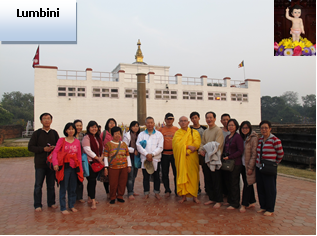
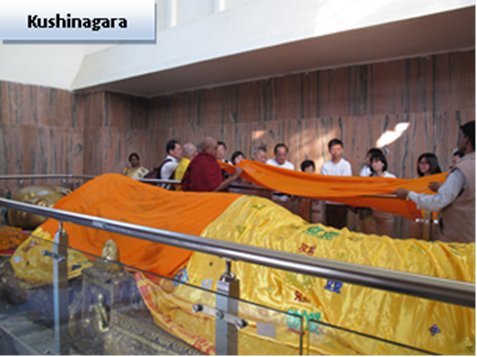
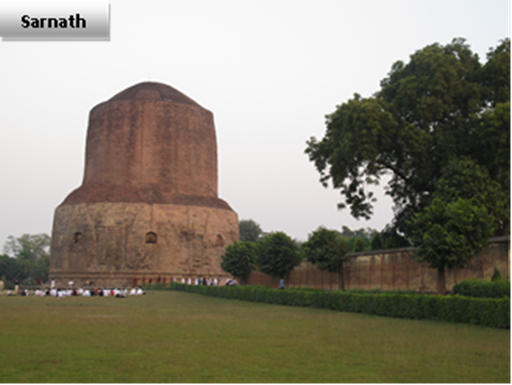
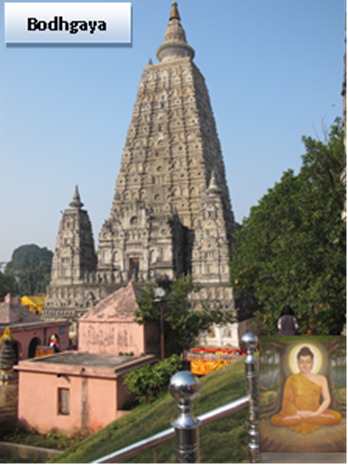
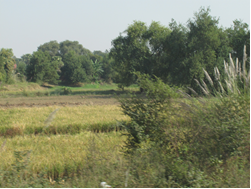

Every Buddhist should inspire to visit the Four Sacred Sites the Buddha spoke of:
“Here the Tathagata was born” is first.
“Here the Tathagata attained supreme enlightenment” is the second.
“Here the Tathagata set in motion the Wheel of Dhamma” is the third.
“Here the Tathagata attained the Nibbana-element without reminder” is the fourth.
The Buddha added, “The faithful monks and nuns, male and female lay-followers will visit those places. And anyone who dies while making the pilgrimage to these shrines with a devout heart will, at the breaking-up of the body after death, be reborn in a heavenly world.”
(Digha Nikaya, Sutta 16 Mahaparinibban Sutta : The Buddha’s Last Day).
I have seen an old photography of Lumbini Park with two majestic Bodhi Trees. During my recent visit in October 2012, I saw only one Bodhi Tree. I was told the other Tree was shipped to Japan in the 1980’s, lock, stock and barrel.
Normally, a sapling is planted on the same site when the original Tree had withered or destroyed.
Does anyone have a clue to the mystery?
I would gladly like to hear from you.
Do post your comment here.
Sahdu! Sadhu! Sadhu!